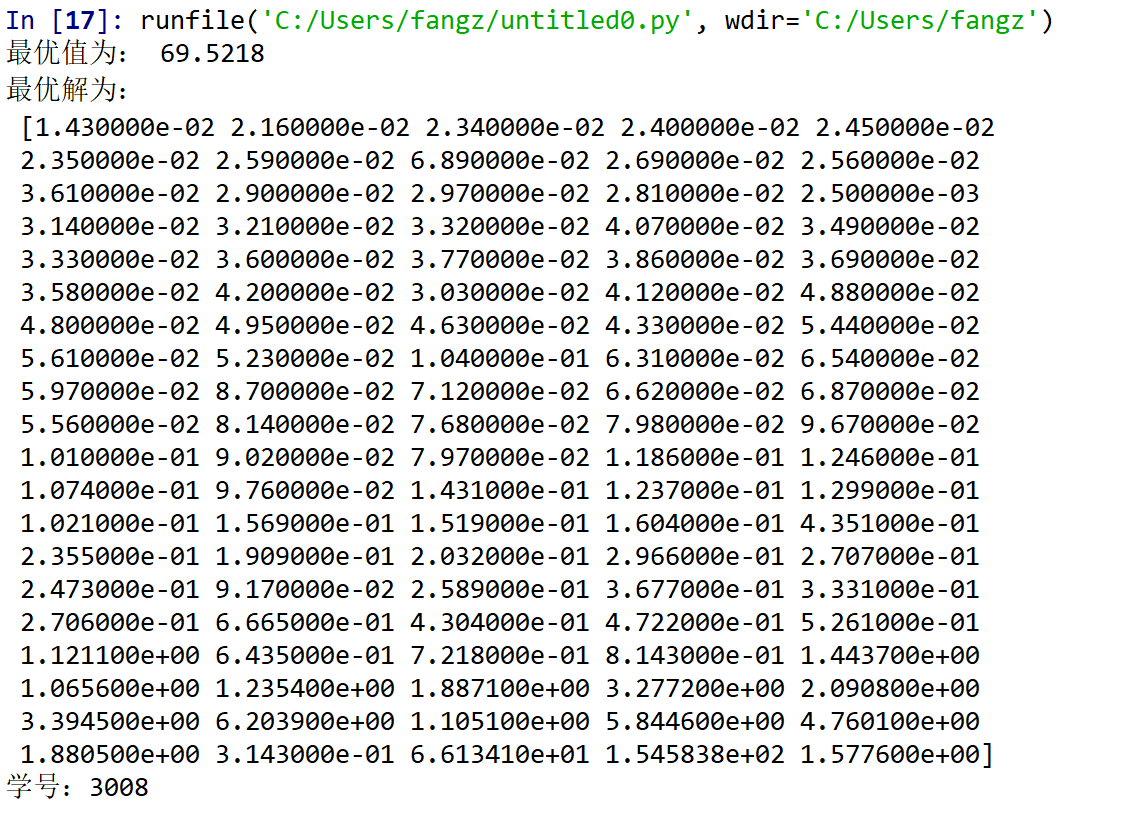5.4求解非凸非线性规划
import numpy as np
from scipy.optimize import minimize
# 定义目标函数
def objective(x):
return -np.sum(np.sqrt(x)) # 注意:scipy的minimize默认是最小化问题,所以这里取负号
# 定义约束条件
constraints = [
{'type': 'ineq', 'fun': lambda x: 10 - x[0]}, # x[0] <= 10
{'type': 'ineq', 'fun': lambda x: 20 - (x[0] + 2 * x[1])}, # x[0] + 2*x[1] <= 20
{'type': 'ineq', 'fun': lambda x: 30 - (x[0] + 2 * x[1] + 3 * x[2])}, # x[0] + 2*x[1] + 3*x[2] <= 30
{'type': 'ineq', 'fun': lambda x: 40 - (x[0] + 2 * x[1] + 3 * x[2] + 4 * x[3])}, # x[0] + 2*x[1] + 3*x[2] + 4*x[3] <= 40
{'type': 'ineq', 'fun': lambda x: 1000 - sum((100 - i) * x[i-1] for i in range(1, 101))} # 加权求和小于等于1000
]
# 初始猜测值
x0 = np.zeros(100)
# 确保变量是非负的
bounds = [(0, None) for _ in range(100)]
# 调用minimize函数,并设置更大的迭代次数限制
options = {'maxiter': 1000} # 增加迭代次数限制
result = minimize(objective, x0, method='SLSQP', bounds=bounds, constraints=constraints, options=options)
# 输出结果
if result.success:
print("最优值为:", -round(result.fun, 4))
print("最优解为:\n", np.round(result.x, 4))
else:
print("问题未找到最优解,状态为:", result.message)
print("学号:3008")由于题目是非线性非凸规划问题,目标函数求最大化,我们转换成求最小化
导入库from scipy.optimize import minimize
结果如下
